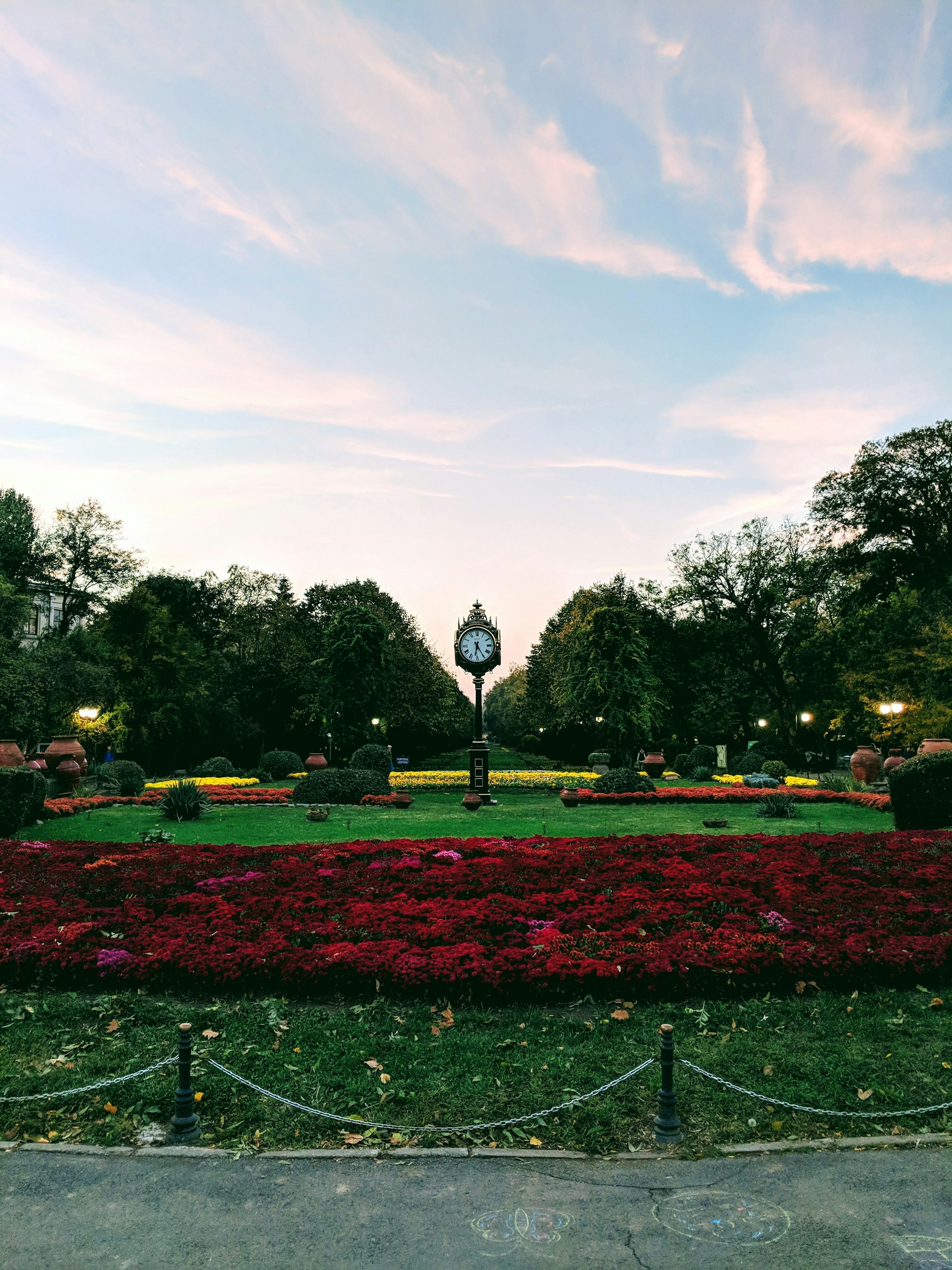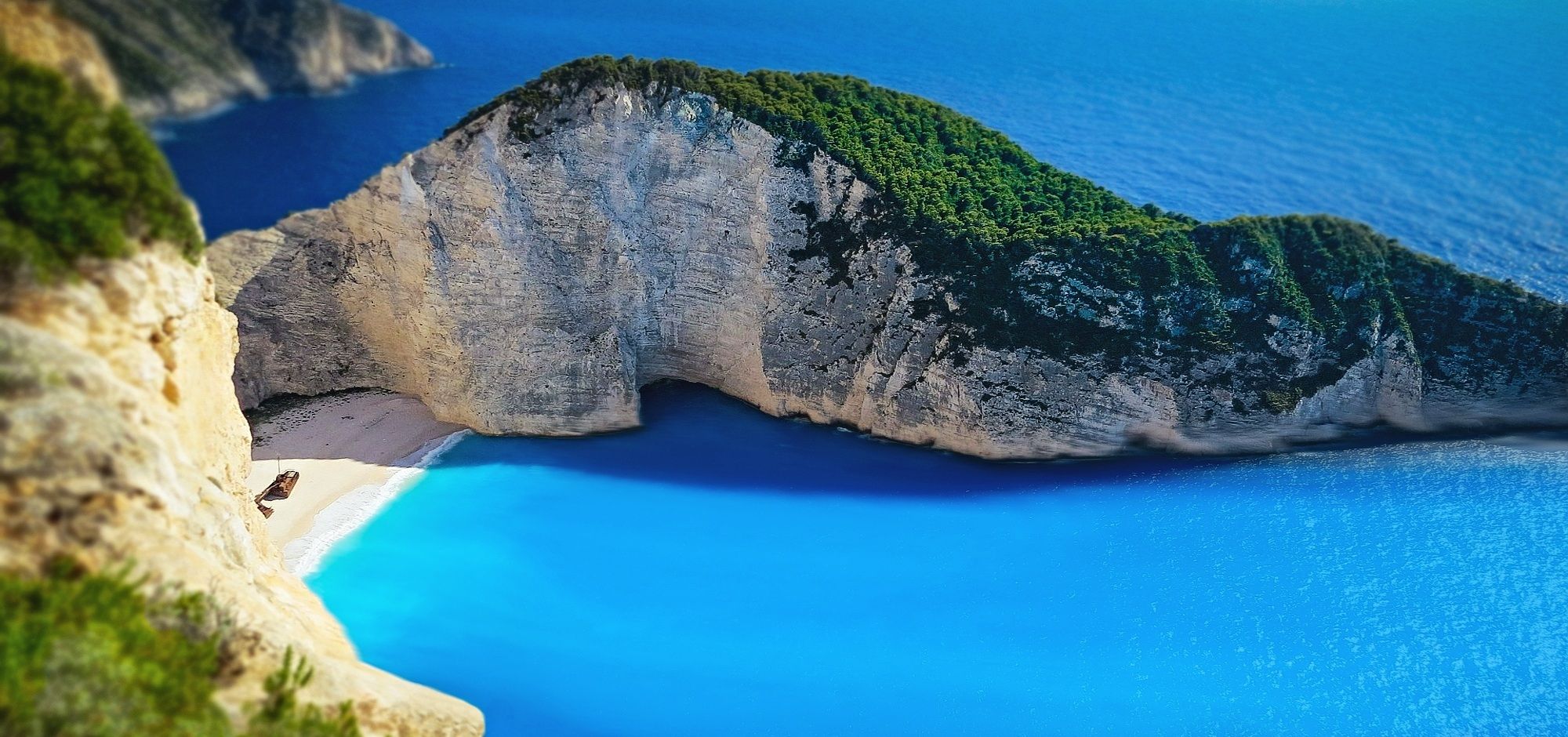10 Best Places to Visit in Bucharest
Having a special and rich history, a lively atmosphere and many unique tourist attractions, Bucharest is one of the safest and most accessible destinations in Europe.
Tourists that are passionate about architecture will discover real treasures in this city, starting with the special monasteries built in the unique Brâncovenesc technique and continuing with the majestic buildings built in the modern, contemporary style. Also for those who are passionate about history will be surprised to discover unique information about Bucharest's past at the History Museum or in a short walk on its old streets.
There are many special places you must visit and unique experiences you must live during your visit in Bucharest. Here are 12 places you should not miss in the capital of Romania:
1. The Parliament Palace
One of the most interesting and valuable building in Bucharest is the Parliament Palace, the second largest administrative building in the world. Built in Brancoveanu style, with Renaissance, Baroque and Germanic influences, this grandiose building will impress you with its architectural style and the over 1000 rooms it includes.
Also called the People's Palace, this building is actually a symbol of interior extravagance thanks to the solid wood furniture, crystal chandeliers, impressive dimensions, huge marble columns and other interior design elements carefully chosen for each room.
Memorable rooms inside the Parliament Palace, where you can spend a few memorable hours: September 13th Entrance, Human Rights Hall, Honor Gallery and Official Entrance Hall, Nicolae Bălcescu, Nicolae Iorga and A.I.Cuza.

2. The Arc de Triomphe
This monument is a 27 m high , built to celebrate the proclamation of the Union. Built between 1921-1922, it was renovated between 1935-1936 and later in 2014. Its parallelepiped shape was made by plastic artists, and the famous Ruschița marble used was carved by local sculptors.
Also, built to commemorates the participation of our country in the First World War, after which the territories inhabited by Romanians were reunited for the first time, it now houses a small museum that can only be visited on special occasions. Tourists who manage to reach the museum will be able to admire four important exhibitions:
- The photography and film exhibition entitled "The Great War of the Reunification of the Nation"
- The exhibition of models and photos called "The Arc de Triomphe in Images"
- "Heraldry of the Great Boyar Families", which includes bronze effigies and photographs
- "The exhibition of the Great Union from 1918", in which unique works can be admired that reproduce the scepter and the royal crowns.
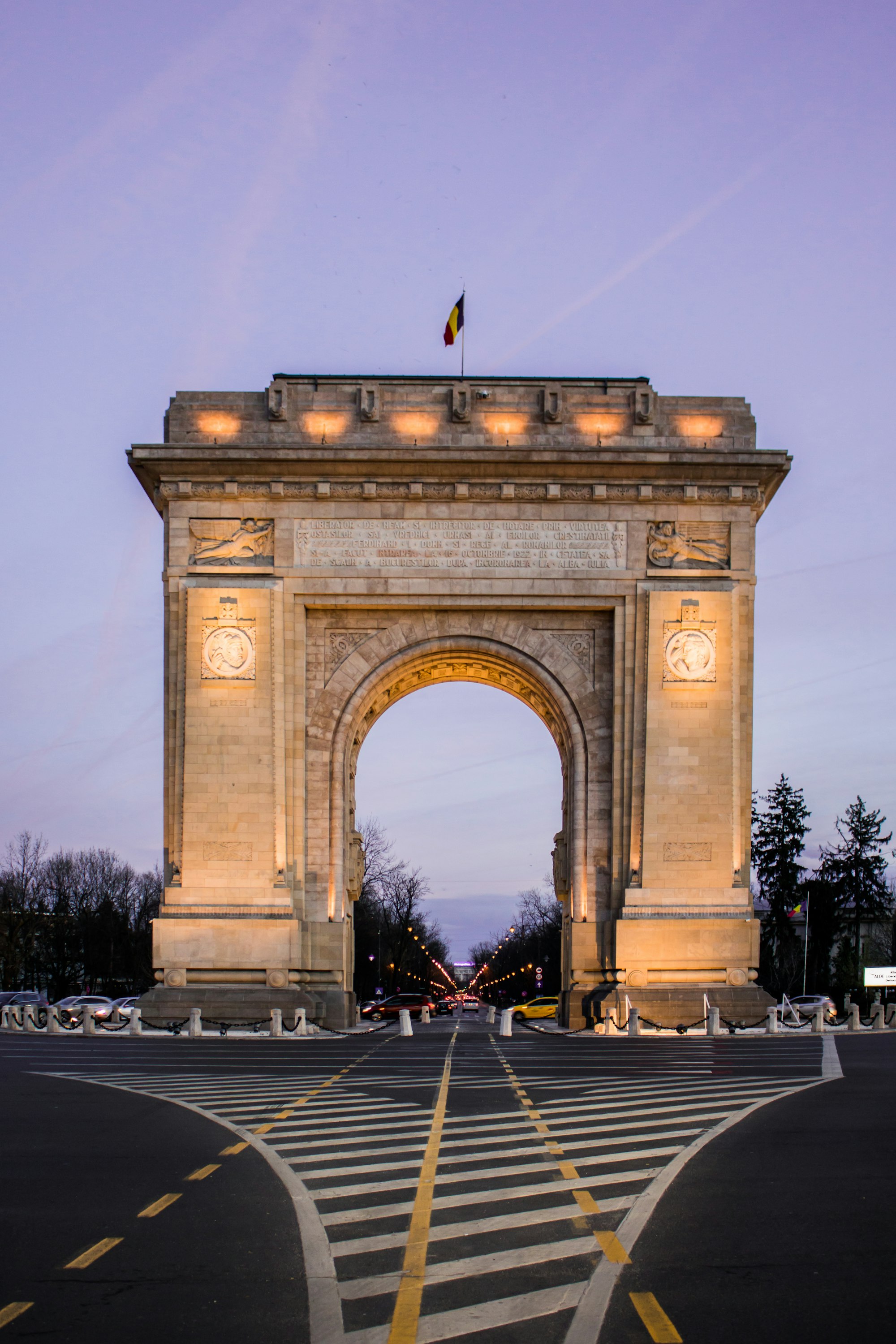
3. The Romanian Athenaeum
The Romanian Athenaeum is the symbol of the national culture of Romania, and its Concert Hall hosts the most important cultural events in Bucharest.
The Romanian Athenaeum was built between 1886 and 1888 with money from a public subscription, the funds being raised following the organisation of a national lottery. The call addressed to the Romanians - "Give 1 RON for the Athenaeum!", has remained famous even today.
The building is an architectural gem, built according to the plans of Alexandru Odobescu, who was inspired by Greek temples. The Roman Athenaeum welcomes its visitors with an impressive hall that includes 12 marble columns, placed to support the concert hall. The Romanian Athenaeum is the place where the most important Romanian musicians were launched: George Enescu, Ion Voicu, Lola Bobescu, Radu Aldulescu and many others.
The Romanian Athenaeum will impress you from the entrance, through the great dome that dominates it and due to its Ionic temple aspect, having proportions similar to the famous columns within the Erechteion temple on the Acropolis.
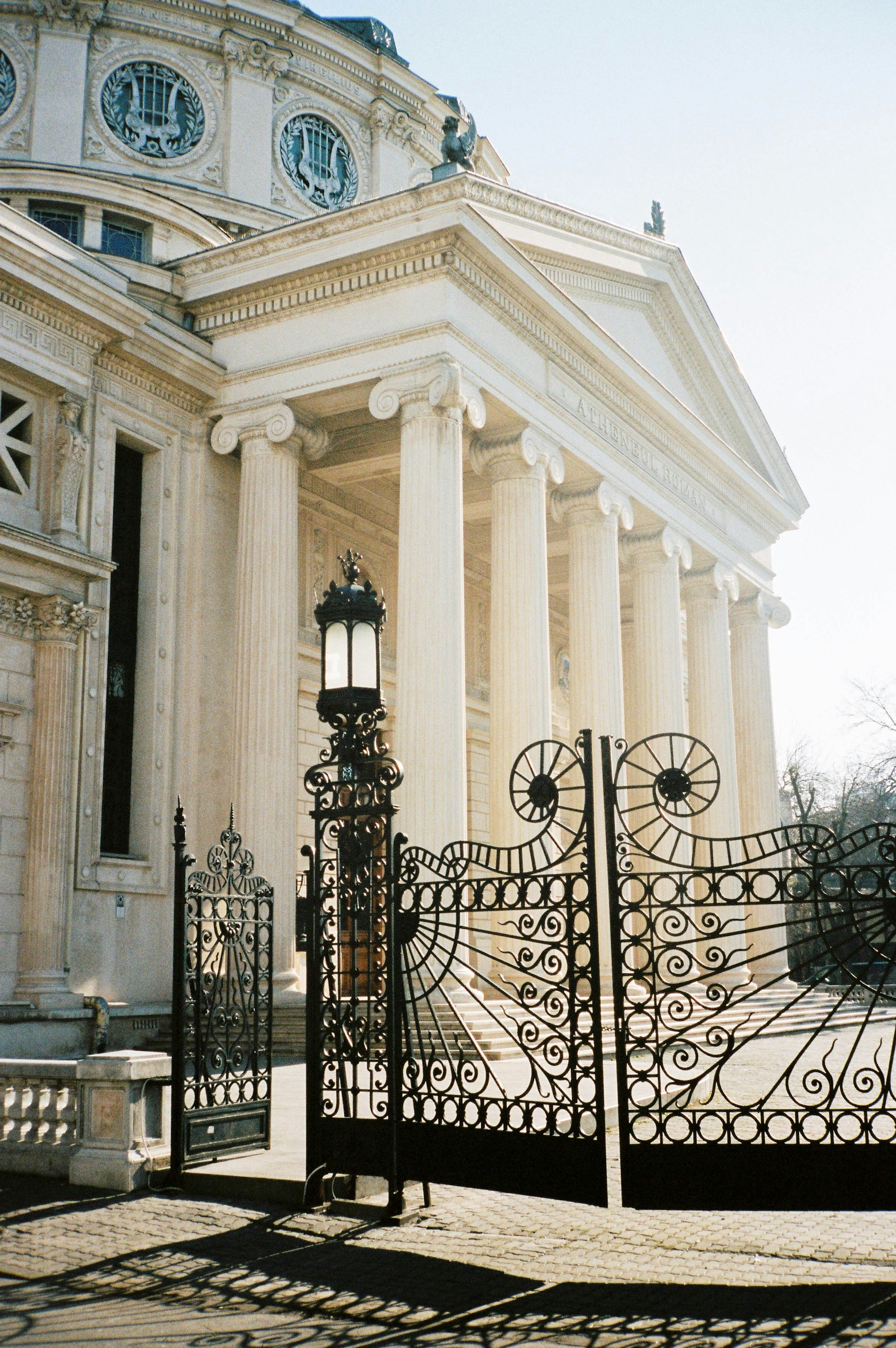
4. The Museum of the Romanian Peasant
The museum became known for its collections of 100.000 objects and was declared a historical monument. Since its foundation by Horia Bernea on February 5, 1990, it has been operating in a neo-Romanian style building.
The building, inspired by the Brancoveanu tradition, arranged in the form of monastic enclosures, was completed in 1941, taking the appearance of the current architectural monument which is the headquarters of the Museum of the Romanian Peasant. The apparent red brick masonry, the arches and the perforated elements, the gazebo reminiscent of the old monasteries bell towers, give the building the sumptuousness of a true palace of art.


5. The Old Town
The Old Town of the capital is one of the most chic areas in the city. You will be surprised to discover the multitude of buildings built in neo-baroque and neoclassical style, which house on the ground floor commercial locations, which animate the entire area.
Tourists eager to relax on the tempting terraces in the area, during their tourist journey through the Romanian capital, will be pleasantly impressed by the Historic Centre of the capital. Festivals, cultural events and medieval art fairs are frequently organised there, which you must include on your list of activities for your stay in Bucharest.
6. Hanul cu Tei (The Linden tree Inn)
The Old Town also hosts one of the most famous streets in the country's capital, Lipscani. Here you will discover "Hanul cu Tei"- "The Linden tree Inn", a grandiose building, dating from 1833. This location is ideal for tourists who want to eat as well as the boyars in the old days in the only inn in Bucharest that has kept its original shape.
It also hosts the largest art gallery in Romania, which includes very old objects, impressive salons and a Spanish-style courtyard, which you will surely notice and appreciate.
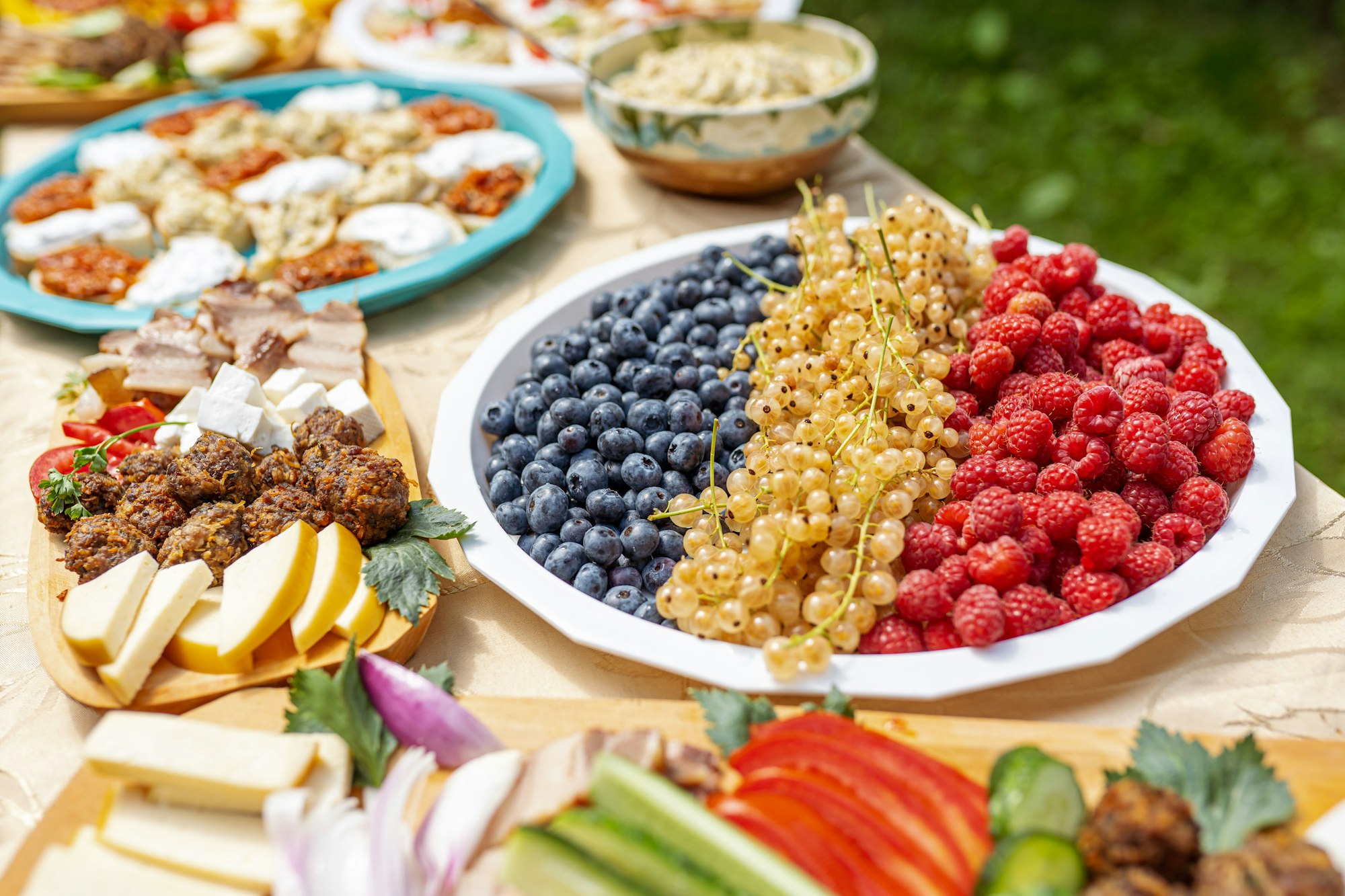
7. Hanu' lui Manuc (Manuc's Inn)
Also in the Historic Centre of the Capital you will discover Manuc's Inn, which is said to be the place where the country's poets and politicians once met. Its architecture is impressive, with wooden gazebos and arches, complemented by wrought iron ornaments.
In addition, there you will be able to try the most famous traditional dishes from Romania, cooked according to the original recipes and you will be able to taste the best wines brought directly from the inn's cellars. It has become a real emblem for the history of the whole country, being the location where the most notable peace negotiations in history took place.


8. Stavropoleos Monastery
This small church was built by a Greek monk named Ioanichie. It is surrounded by tall buildings and is located behind the National History Museum. Once there, you will immediately recognize various representative influences of Brancoveanu art.
Stravopoleos Monastery attracts attention through its imposing stone columns, special pedestals and the craftsmanship of sculptures made with plant motifs. They express a certain baroque sensibility and oriental influences. The size of the interior paintings and the special character of the icons immediately attract the attention of tourists looking for the most sacred spiritual and theological symbols around the world.

9. Herastrau Park (King Michael I Park)
The country's capital is not only a city that impresses with its architecture and history, but also one where you can enjoy outdoor walks in the most beautiful parks. Of these, the most popular is King Michael I Park, formerly Herăstrău Park , built on the shore of the lake of the same name, in 1936. It is not only the largest park in the capital of our country but also the largest park located inside a city in Europe.
You can spend a whole day here, surrounded by nature and you will not get bored. You will be able to ride a boat, a bicycle or a boat and you will be able to visit the Herăstrău Aquarium. In addition, you will be impressed by the unique way in which the clear water of the lake reflects the Press House and Sky Tower at sunset. Also there you can walk through the Japanese Garden, which hosts some of the most beautiful specimens in the park, such as cherry blossoms and Japanese acacia with weeping branches.

10. Cismigiu Park
You can spend time outdoors, in the middle of nature in Cismigiu Park, considered the soul garden of the inhabitants of the capital. Those who want to get rid of traffic, the noise of urban areas and spend time in a real oasis of greenery, will discover many attractions in this park. The fanfare of the Cismigiu Marching Band is the location where the mornings are spent to the rhythms of classical or popular music.
Those who are passionate about the time spent in nature, near the lakes, will be pleasantly impressed to discover Cismigiu Lake, where they can ride a boat or a water bike. Also there you will be able to admire the Hanging Rose Garden, Eminescu's Spring, all these attractions being surrounded by the special aroma of roses and magnolias.
